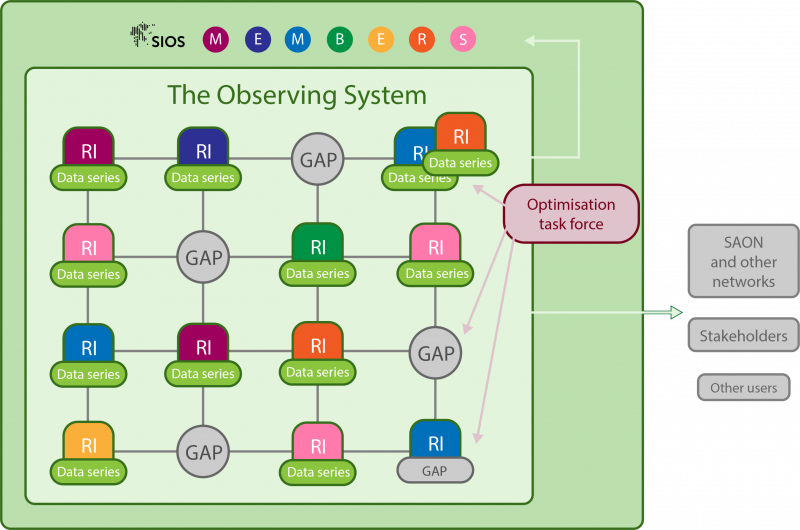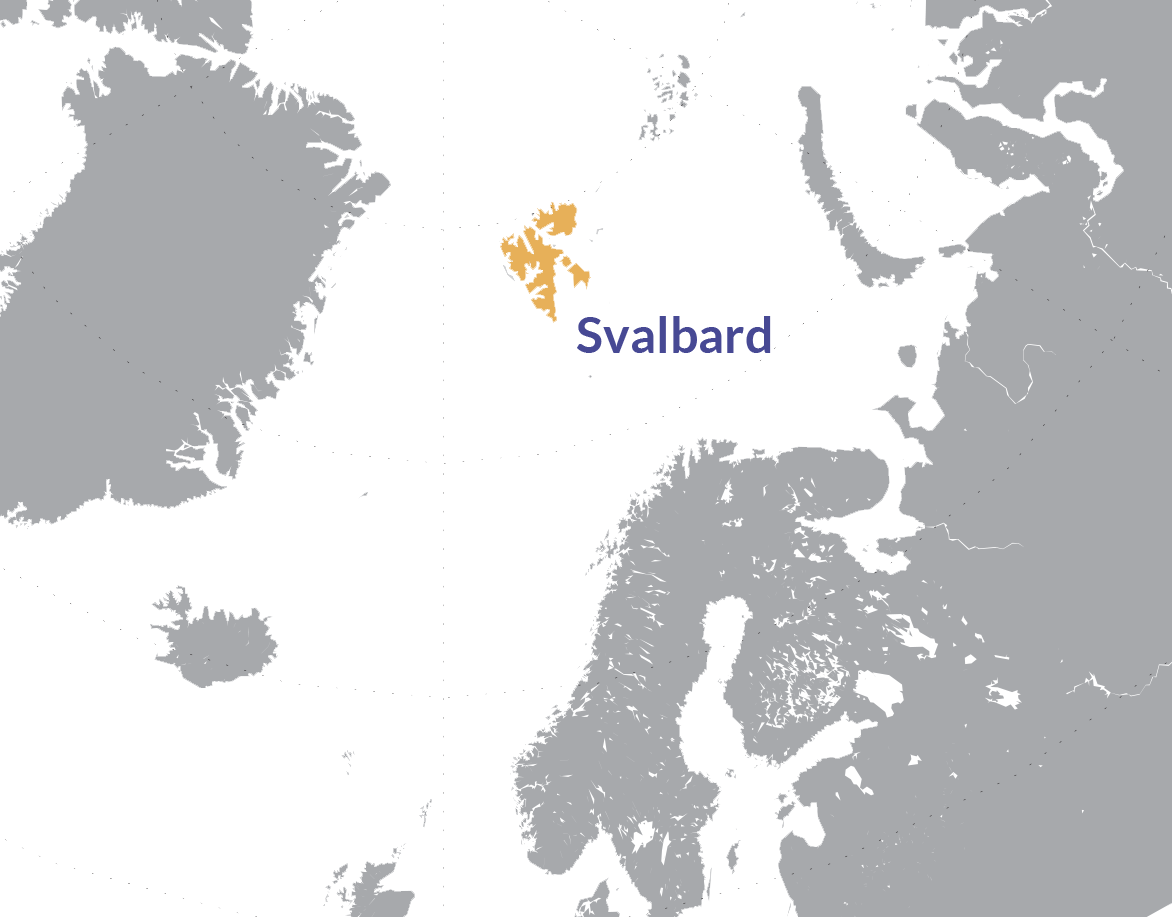SIOS is a regional observing system for long-term measurements in and around Svalbard addressing Earth System Science questions. SIOS integrates the existing distributed observational infrastructure and generates added value for all partners beyond what their individual capacities can provide.
SIOS brings observations together into a coherent and integrated observational programme that will be sustained over a long period. Within SIOS, researchers can cooperate to access instruments, acquire data and address questions that would not be practical or cost effective for a single institution or nation alone.
The Scientific Optimisation Advisory Group supports the development and prioritising of the observing system and the science case of SIOS.
- Why do we establish such an observing system in Svalbard?
-
Svalbard - an important arena for climate change investigations
The Arctic region currently experiences the most severe climate change worldwide with an anticipated warming of four to eight degrees and a significant increase in precipitation until the end of the 21st century. Svalbard is consequently an important arena for investigations of environmental and climate change.
Environmental advantages:
- Svalbard is well positioned in a region with large gradients between mild (Atlantic) oceanic and harsh polar conditions
- Svalbard is set in a High Arctic location remote from the major northern land masses where all the other important Arctic monitoring sites are located
- Svalbard is exposed to influences from the complete Northern hemisphere, due to atmospheric and ocean currents
Infrastructural advantages:
In the Norwegian High-Arctic, the archipelago of Svalbard already has a substantial research infrastructure (The Ny-Ålesund research station, Longyearbyen, Hornsund and Barentsburg). Extensive institutionalized international cooperation exists for more than 20 years between institutions from about 20 countries, with coordinating committees like Ny-Ålesund Science Managers Committee (NySMAC) and Svalbard Science Forum (SSF).
Additional advantages are:
- High data transfer capacity between Svalbard and the Norwegian mainland and between Longyearbyen and Ny-Ålesund
- infrastructure to study both the upper and lower atmospheric layers
- Unique potential for use of satellite data (high overpass rate, on-site data collection and pre-evaluation)
- Excellent flight connections between Svalbard and the Norwegian mainland year-round
- Harbour facilities for research vessels in several locations
- Svalbard provides excellent opportunities to study marine and terrestrial ecosystems
- Svalbard has the only station below the polar cusp of Earth’s magnetic field

Figure: In and around Svalbard you find a wide variety of research infrastructure (RI) which generates observations of parameters in all spheres of the Earth system. The RI is owned by SIOS members (represented by different colours in this figure). The observations are distributed in space and time, but also thematically, but there exist some gaps and overlaps.
The aim of SIOS is to bring them into a coherent network, an observing system, and work in collaboration to fill observational gaps and minimise the overlaps in order to use resources in an efficient way and at the same time provide a reliable long-term data portfolio for Earth System Science researchers.




























